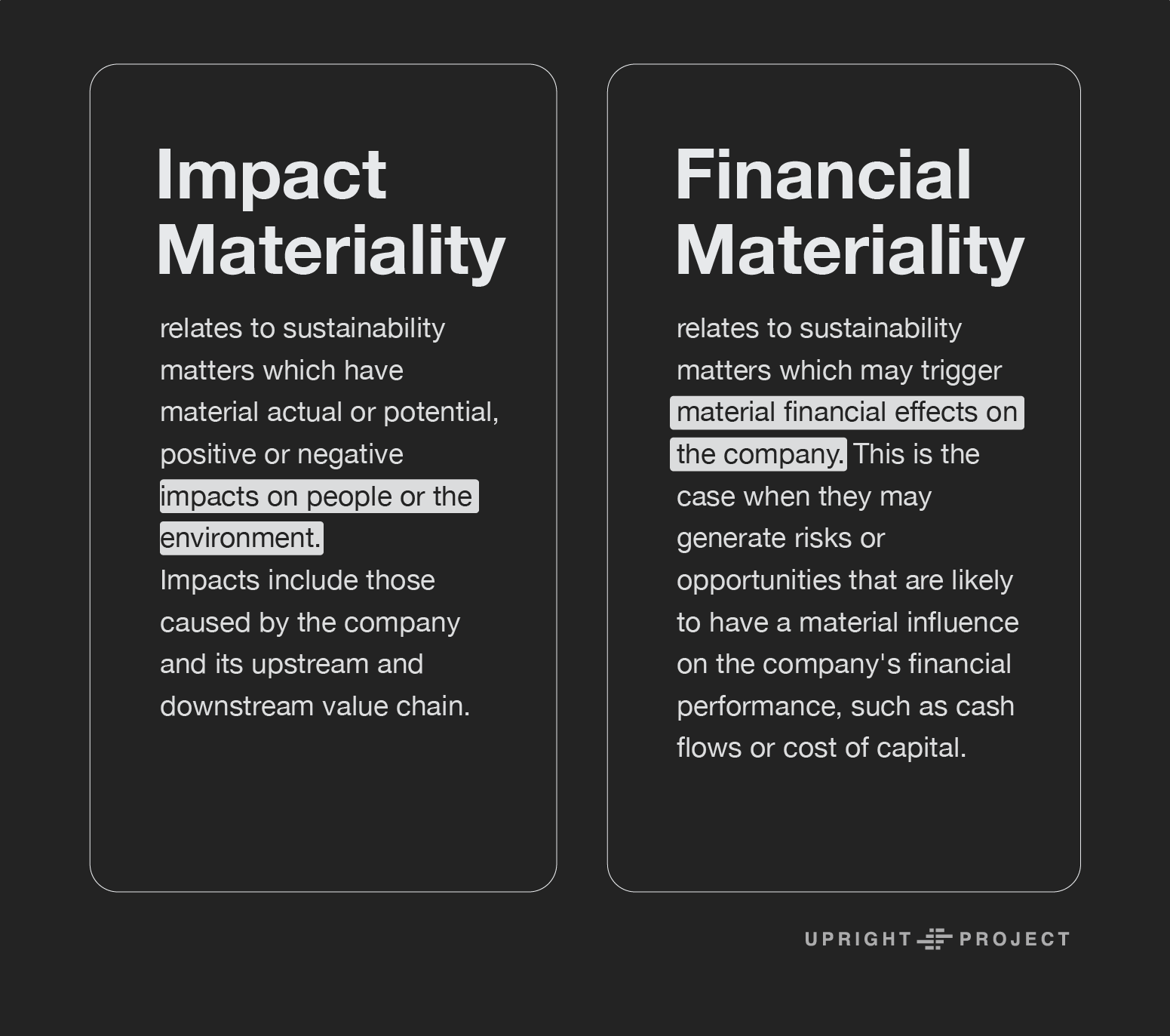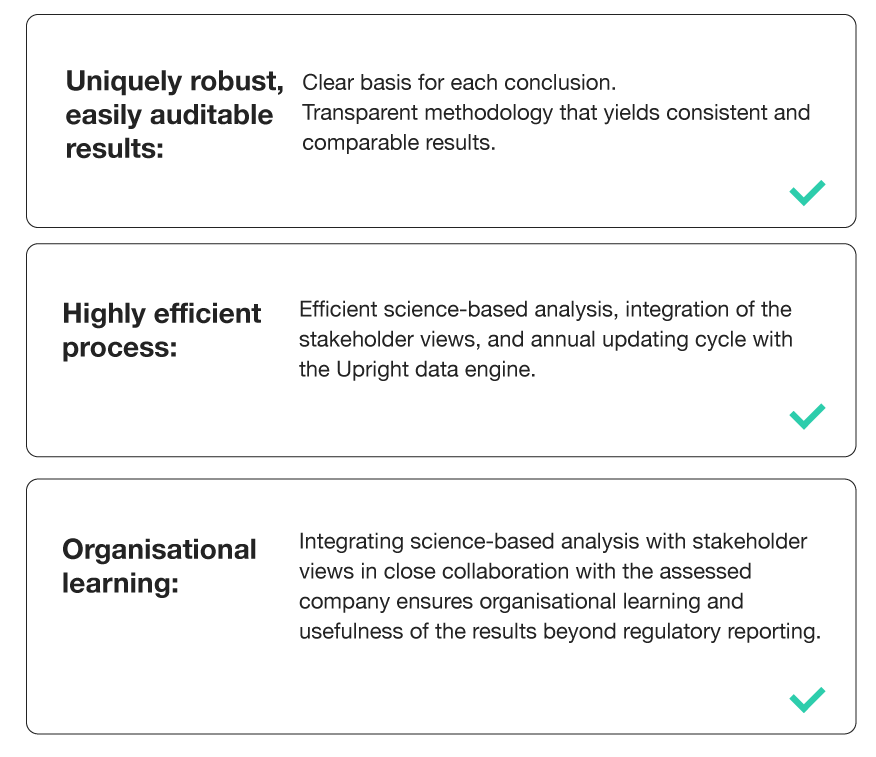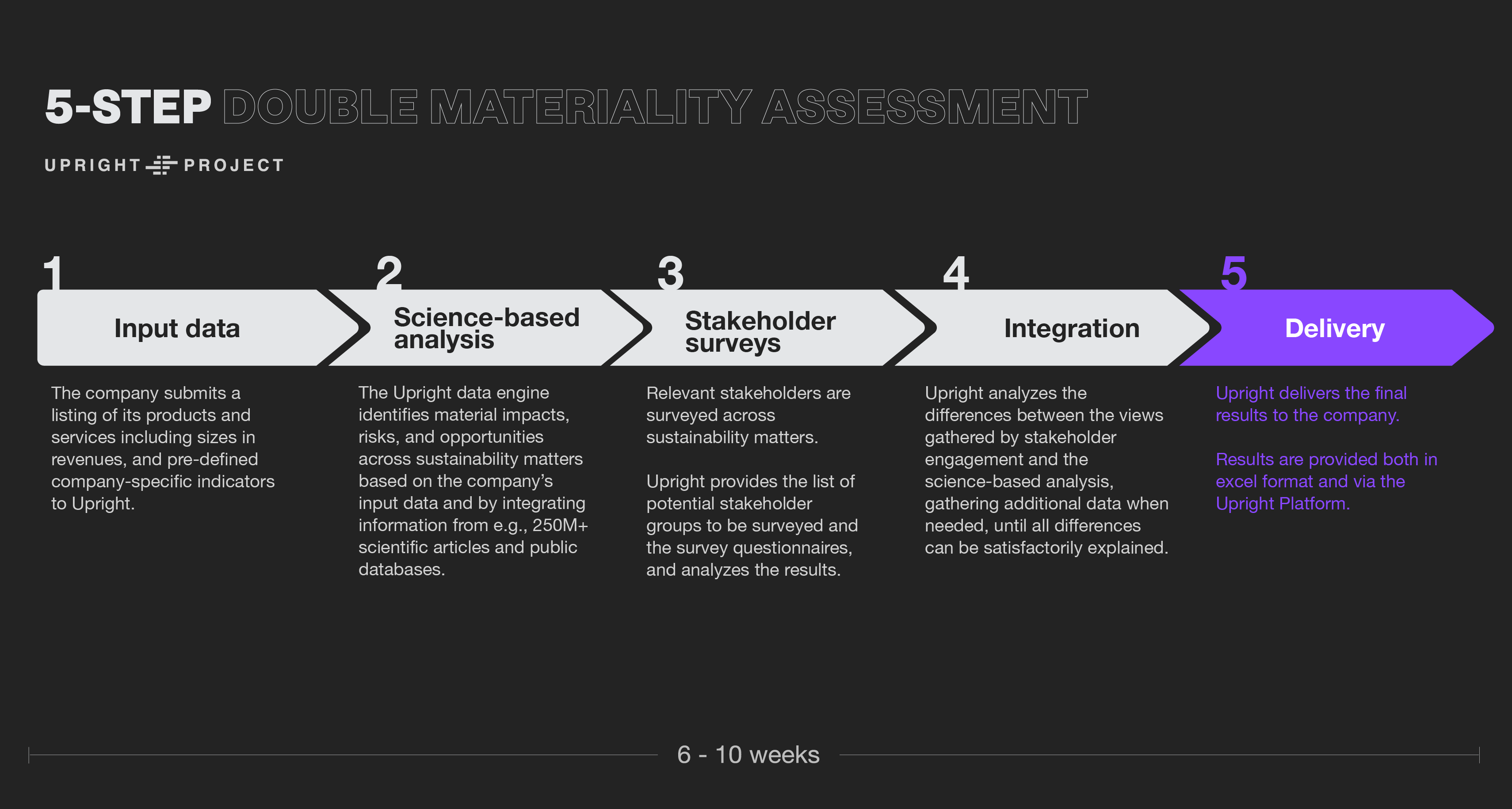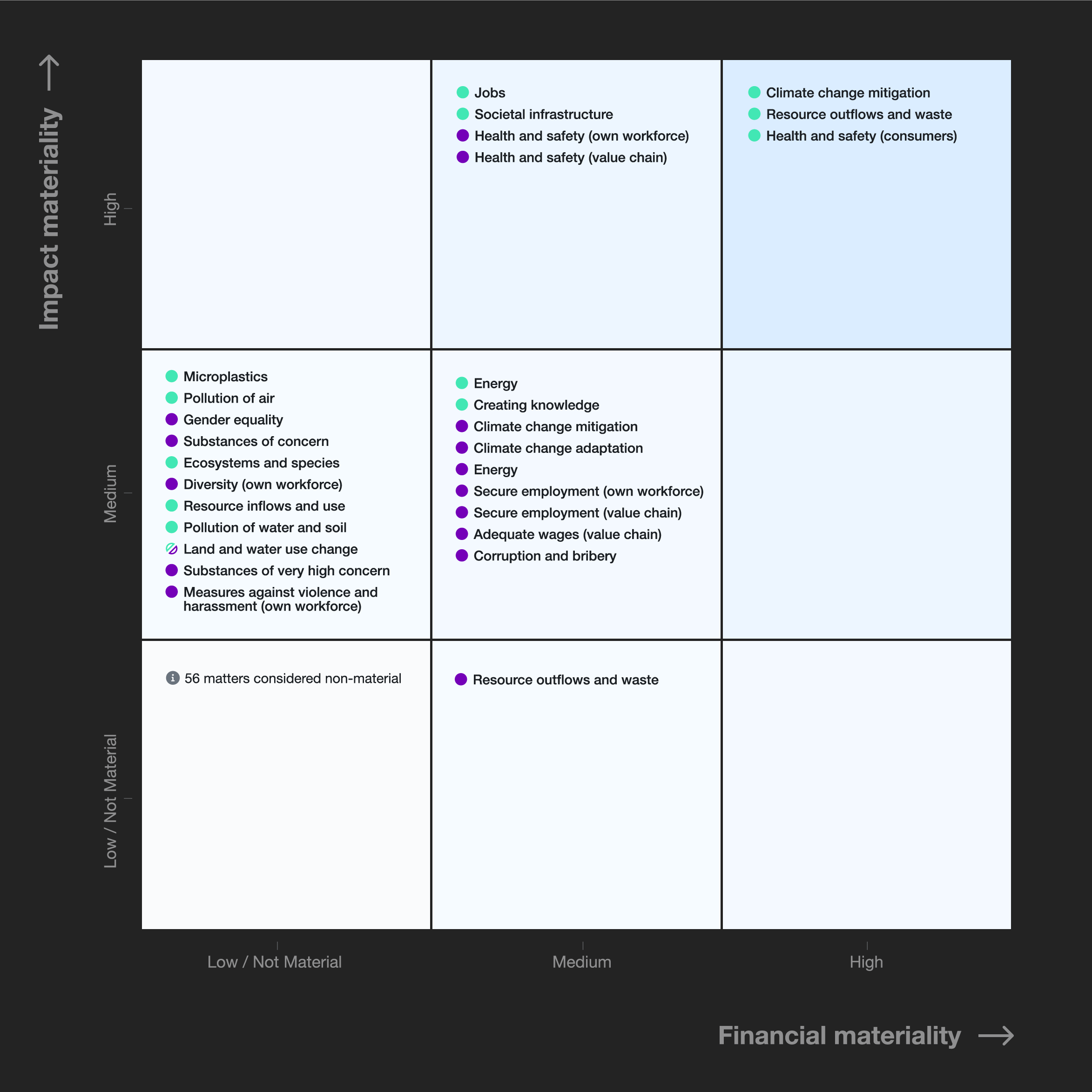Double Materiality Assessment done right

What is double materiality?
Due to the evolving regulatory landscape, assessing double materiality is rapidly becoming increasingly relevant for companies, especially in Europe.
Double materiality assessment is a process that prioritises sustainability topics within two dimensions:
1. Impact Materiality
2. Financial Materiality
The main driver for this development is the EU's Corporate Sustainability Reporting Directive (CSRD), a set of legislation by the EU that requires a broad range of companies to publish sustainability reports according to the European Sustainability Reporting Standards (ESRS), which mandate conducting a double materiality assessment as part of the reporting process.

Which companies are in scope of CSRD?
Large listed companies with 500+ employees and other "public interest entities" will have to apply the new rules for the first time in the 2024 financial year, for reports published in 2025. Large unlisted companies and listed SMEs will follow in the subsequent two years. In total, approximately 50,000 companies will be subject to the CSRD.

Double materiality - Upright's approach
The Upright approach to double materiality combines rigorous science-based analysis with stakeholder views to yield a uniquely robust assessment of double materiality.
The science-based analysis is provided by the Upright data engine, which integrates information from a variety of sources, including 200M+ scientific articles, public databases, and information supplied directly by the company.
The role of stakeholder engagement is to complement the science-based analysis by providing a complementary perspective that e.g. helps identify topics that may have been missed by the purely data-driven analysis.
Differences between views gathered by stakeholder engagement and the science-based analysis are carefully analyzed until they can be satisfactorily explained. The process is designed to both guarantee robust results and maximize organizational learning as part of the process, while being efficient.
More information about Upright's science-based analysis in the Upright Knowledge Base

Process: Double Materiality Assessment

Deliverables: Double Materiality Assessment
- Final report with both impact and financial materiality status for all ESRS topics and relevant entity-specific topics, along with the following information:
- Severity of impact
- Impact valence (positive / negative)
- Impact type (actual / potential)
- Relevant value chains (upstream, downstream, internal)
- Relevant time horizons (short-, medium- and long-term)
- Thresholds used for defining impact and financial materiality
- List of relevant risks and opportunities, including risk magnitude and probability
- Visual representation of material sustainability matters in the form of materiality matrix
- Report on the methodology for assurance purposes
- List of relevant ESRS disclosure requirements based on the results

CSRD Step-by-step guide
Double materiality assessment in six weeks
- Double materiality assessment in brief: What is it and who needs to conduct it
- Crystal-clear instructions: A comprehensive process description on conducting the double materiality assessment using Upright’s data
- Resource Requirements: What is expected from you and what is provided by Upright
- Output Description: The content of the final report from the assessment
.png)
On-demand CSRD webinar
From subjective selection to objective assessment of double materiality
Download our one-hour webinar to dive deep into CSRD and learn why you shouldn't just subjectively select your material impacts, risks and opportunities. The webinar includes a demo of Upright's data-driven double materiality assessment and a real-life case example with ADB Safegate.
Questions we will address:
-
What are the latest developments of CSRD regulation and implementation guidance?
-
Why are material impacts, risks and opportunities not merely a matter of opinion?
-
What are the most common double materiality assessment pitfalls and how to avoid them?
-
Case example: Why did ADB Safegate choose a data-driven approach to double materiality assessment, and what kind of insights did it provide to them?

Upright is trusted by 250+ companies & investors






